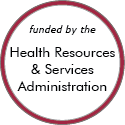Alaska Models and Innovations
These stories feature model programs and successful rural projects that can serve as a source of ideas. Some of the projects or programs may no longer be active. Read about the criteria and evidence-base for programs included.
Other Project Examples
Cold Water Safety Children and Youth Educator Program

Updated/reviewed April 2025
- Need: Drowning was a leading cause of death for children in Alaska.
- Intervention: Cold Water Safety and Survival for Educators workshops were developed in 1998, with help from a 4-year federal grant, to train educators to provide education and hands-on skills for school children and members of the public.
- Results: The safety program was integrated into about 79% of Alaskan school curriculum and schools in other states, helping to train hundreds of educators and thousands of children on the importance of cold water safety.
Targeted Rural Underserved Track (TRUST) Program

Updated/reviewed April 2025
- Need: There is a shortage of rural physicians in the Northwestern United States.
- Intervention: University of Washington medical students are receiving training through the TRUST program in rural communities across a five-state radius.
- Results: Long-lasting connections have been formed among regional communities, medical students, and rural health professionals, with the goal of producing more rural physicians.
Portable Alternative Sanitation System (PASS)
Updated/reviewed December 2024
- Need: To bring low-cost water and sanitation improvements to homes in tribal villages in Alaska without access to piped water or sewer systems.
- Intervention: The Portable Alternative Sanitation System (PASS) treats hauled water, provides for handwashing with clean water, and disposes waste without traditional piping.
- Results: Residents in the pilot project reported that PASS was cleaner and healthier than the self-haul method.
Family Wellness Warriors Initiative
Updated/reviewed November 2020
- Need: Decrease rates of domestic violence, child sexual abuse, and child neglect for people in remote tribal villages.
- Intervention: An evidence-based model of traditional culture trains local communities on methods of prevention and treatment for domestic and interpersonal violence.
- Results: Self-sustaining local system with improved family and spiritual well-being and decreased healthcare access needs.
Last Reviewed: 11/8/2023

